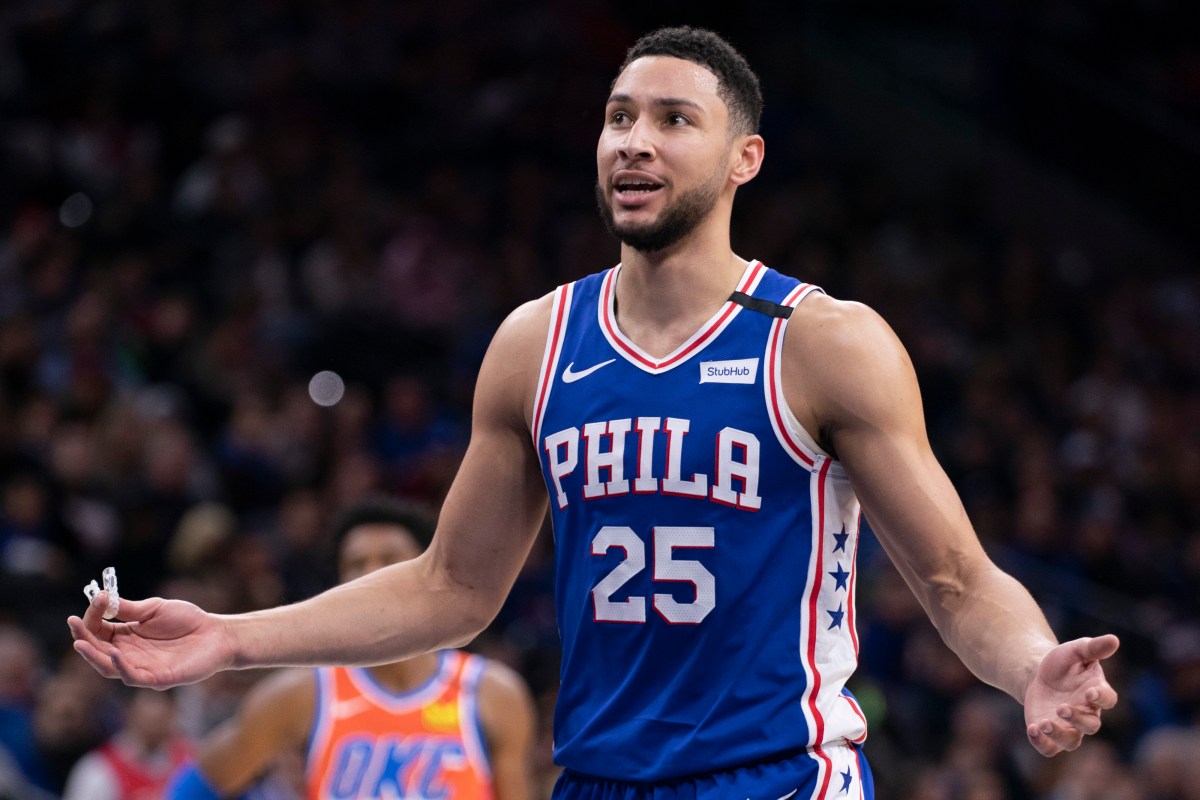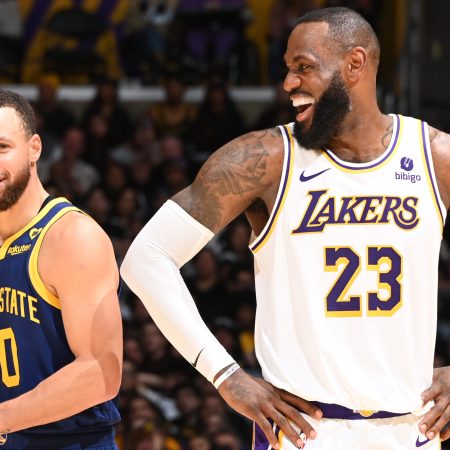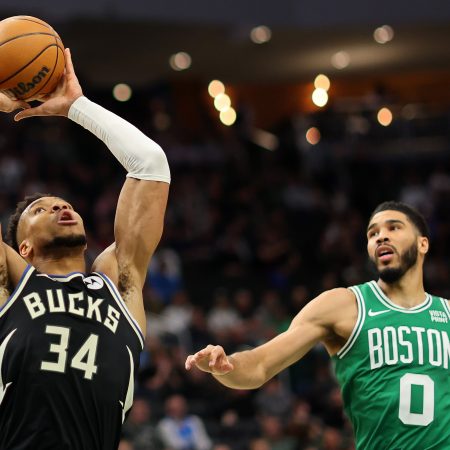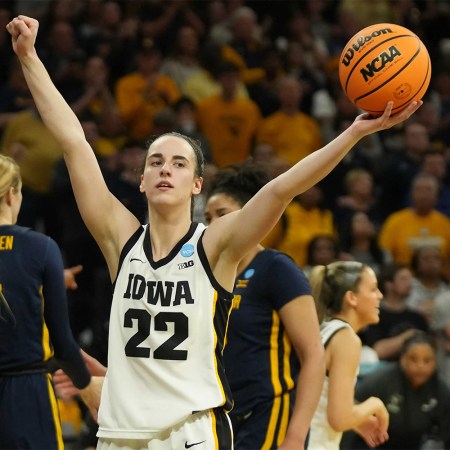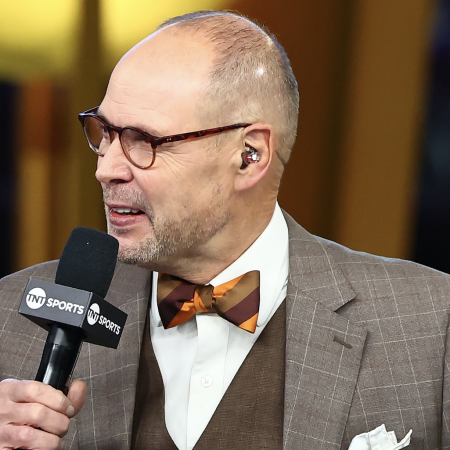Ben Simmons is the future of the NBA, and a basketball genius. His passes are accurate and incisive; on defense he singlehandedly derails offensive possessions as he toggles between multiple responsibilities. An all-NBA level player at just 23 years old, he’s evidence that the Philadelphia 76ers’ Process has yielded worthwhile results. The numbers simply do not lie: Oscar Robertson and Magic Johnson are the only players whose first three seasons statistically match up with that of Simmons. There has never been a point guard with his size and skill set, and as a result, Simmons is pushing against the outward bound of possibility. Thanks to him and Joel Embiid, Philadelphia has two of the most promising young players of the last decade, positioning them as perhaps the NBA’s next defining dynasty.
Ben Simmons is the CEO of mulishness. His inability — no, refusal — to shoot jump shots is so harmful to the Sixers’ half-court offense that his coach, Brett Brown, is literally begging Simmons to do the bare minimum of what’s expected of an NBA player. Simmons has stagnated since his rookie year, when the Celtics revealed that he’s rendered essentially useless on offense when just people stand in his way. He’s a power forward — or a small-ball center, for the truly woke — masquerading as a guard. This lack of self-awareness isn’t just an on-court inconvenience, it’s akin to moral failure, the mark of a player more concerned with Jenners than jumpers. Sure, he posts gaudy assist numbers, but his non-shooting mucks up the Sixers’ offensive spacing and his impending max contract mucks up their salary cap situation — he doesn’t merely fail to complement Embiid on the court, he robs the Sixers of the chance to find players who do. Hypothetically, Simmons could prove himself worthy of his bloated salary, but only if he fundamentally changes his approach to the sport. Shoot a three, coward.
Ben Simmons is a dialectic in baggy shorts.
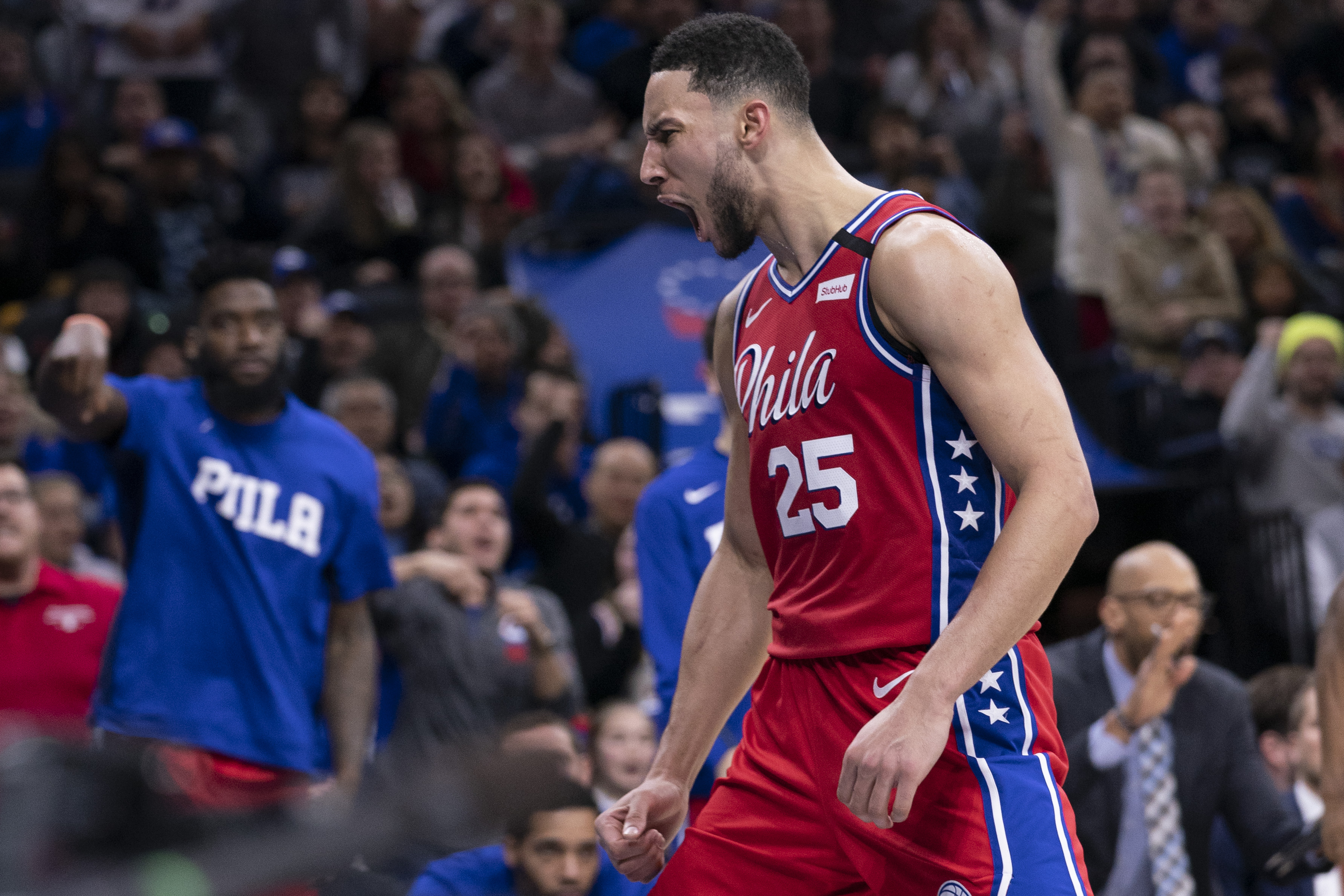
Since Simmons’s NBA debut in 2017, he has cut a prismatic figure: he’s either destined for the innermost ring of basketball’s elite or he’s Michael Carter-Williams with more Instagram followers; he’s the key to ending the team’s 37-year title drought or he alone dooms them to perennial disappointment; he’s one of the most singularly dynamic players in the league with the ball, but as useful as a parasol at midnight without it. As such, Simmons’s idiosyncratic style is predictably fertile ground for concern-trolling and hot-takes; never mind that the 76ers are on pace to win 50 games for the third straight season. Still, they’re currently mired in the bottom half of the Eastern Conference playoff bracket and will be without Embiid for the foreseeable future while he nurses a torn ligament in his left hand. If ever there was a time for Simmons to prove his superstar bonafides, it’s now.
Like your ex-girlfriend, Simmons needs space. His offense is predicated on charging to the basket, drawing in the help defense, and spotting an open teammate. To be at his most effective, though, Simmons needs to have access to uncongested avenues toward the basket — if he’s unable to compromise defenses with his penetration and passing, Simmons can most closely resemble a fancy Quincy Acy. The ideal set-up for Simmons would be similar to the environment that Giannis Antetokounmpo enjoys in Milwaukee, one where he’d be surrounded by sharpshooters who could capitalize on his kick-out passes and declutter his rim-ward pillages. Instead, the Sixers built a hideous, violent thing — a Sarlacc pit filled with fists. To be sure, the Simmons-Embiid partnership is not nearly as maladaptive as Philly fatalists make it out to be (when Simmons and Embiid share the court this season without Al Horford, Philly scores at a clip that would be among the highest offensive ratings in NBA history), but their playoff successes are mostly credits to Embiid’s dominance while Simmons has foundered in the postseason when he’s played without Embiid by his side.
More troublesome than the mostly imagined lack of chemistry between Simmons and Embiid is the reality that the Sixers’ roster is devoid of any player who can shoot and dribble and run fast at a time when conventional wisdom dictates that players should be able to do all three. After losing Jimmy Butler and J.J. Redick last summer, they acquired Al Horford and Josh Richardson, opting to supersize their roster rather than target players who could fill the shot-creation void. By doubling down on their strength, the Sixers exacerbated their biggest weakness.
Without Embiid, the Sixers presumably would cater to Simmons by embracing shooting and a faster pace. Barring an in-season trade, this roster lacks perimeter zest, but the Sixers could fashion a semi-convincing facsimile of a modern NBA offense by allocating Embiid’s newly available minutes to guards and wings like Furkan Korkmaz, Matisse Thybulle, James Ennis and Trey Burke who can somewhat threaten defenses from beyond the arc. With Embiid no longer demanding the ball, Horford could reassume the playmaking-center role he pioneered in Atlanta and Boston before Philly recast him as a jumbo power forward. Similarly, Tobias Harris could be given more freedom to roast the mismatches that catalyzed his breakout with the Clippers last season.
The Sixers haven’t done this. Mike Scott, the Threegional Manager, initially filled Embiid’s spot in the starting-five — which would be really cool if Mike Scott were, like, good — and provided a semblance of shooting before Thybulle usurped his spot. More surprising than the lineups they’re playing is the way those lineups have played. In the past, the Sixers have revved up the pace without Embiid, allowing Simmons to race to the basket before defenses can get set. During the first six games since Embiid’s injury, the Sixers have inched their way to what would be the league’s slowest pace and a 4-2 record. Schematic changes aside—the Sixers run more pick-and-rolls and fewer post-ups sans Embiid — they’ve largely retained their core identity, turning opposing offenses into corn cobs with swarming, tentacular defense, while their own toothless offense struggles not to succumb to a strain of awkwardness most commonly found in freshman orientation group.
Like your ex-girlfriend, Ben Simmons needs space
Through all of this, Simmons remains the one constant. He’s so easy to see, if you let yourself. Neither an unreadable cryptogram nor a referendum on how basketball players are classified or organized, Simmons is simply a very good player with very defined strengths and weaknesses. He’s punished because he seamlessly combines two familiar and wildly different archetypes — the pure point guard and the athletic, high-energy big man; nobody criticizes Ricky Rubio for not blocking enough shots or shrieks that Montrezl Harrell has defiled the spirit of basketball by not shooting threes.
The real issue in Philadelphia is the flawed ways in which Simmons is understood, not actually Simmons himself. He is 6’10, 230 pounds, and can’t shoot. He’s a power forward — and a revolutionary one at that. It’s premature to declare that the big man is dead in today’s NBA, but it’s clear that big men, like croutons in a salad, are most effective when they’re deployed with nuance and intent—meanwhile, the Sixers are hunched over a jagged bowl, their mouths covered in crumbs, trying to live on bread alone. When Simmons is paired with either Embiid or Horford, the Sixers’ offense is staggeringly productive. The offense lags when the three of them are forced to uncomfortably cohabitate.
The fact that Simmons’s stats haven’t really changed over his three seasons doesn’t signal inaction or a lack of improvement — rather, it’s a testament to his malleability. He has remained historically productive helming a whirring, fast-paced offense his rookie year, an inchoate improvised superteam last year, and an absolute bruiser of a team this year. Whereas other star players function as a system unto themselves, Simmons’s gift is his ability to amplify the strengths of his talented teammates. He will most likely never be the engine of a championship-level team, but his elite playmaking and defensive ability ensure that he definitely will not be the root of his team’s failures. Instead, he is the invisible suture, holding the team together as it morphs and actualizes around him. He’s alternately the alley and the oop, the pick and the roll, the help and the recover. The questions that swirl around Simmons — Why won’t he shoot? Is he holding Embiid back? Is Embiid holding him back? — are secondary to the primary question: Who is Ben Simmons?
The answer has never been more clear: Ben Simmons simply is.
Whether you’re looking to get into shape, or just get out of a funk, The Charge has got you covered. Sign up for our new wellness newsletter today.
